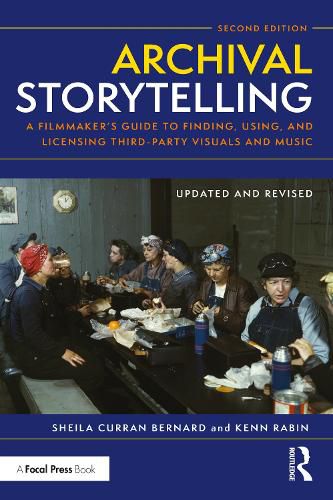Readings Newsletter
Become a Readings Member to make your shopping experience even easier.
Sign in or sign up for free!
You’re not far away from qualifying for FREE standard shipping within Australia
You’ve qualified for FREE standard shipping within Australia
The cart is loading…






Fully revised and updated, Archival Storytelling second edition is a timely, pragmatic look at the use of audiovisual materials available to filmmakers and scholars, from the earliest photographs of the 19th century to the work of media makers today.
Whether you’re a top Hollywood filmmaker or a first-time documentarian, at some point you are going to want to find, use, and license third-party materials-images, audio, or music that you yourself did not create-to use them in your work. This book explains what’s involved in researching and licensing visuals and music, and exactly what media makers need to know when filming in a world crowded with rights-protected images and sounds. Filled with insights from filmmakers, archivists, and intellectual property experts, this second edition defines key terms such as copyright, fair use, public domain, and orphan works. It guides readers through the complex archival process and challenges them to become not only archival users but also archival and copyright activists.
This book is an essential resource for both students and professionals, from seasoned filmmakers to those creating their first projects, offering practical advice for how to effectively and ethically draw on the wealth of cultural materials that surround us.
$9.00 standard shipping within Australia
FREE standard shipping within Australia for orders over $100.00
Express & International shipping calculated at checkout
Fully revised and updated, Archival Storytelling second edition is a timely, pragmatic look at the use of audiovisual materials available to filmmakers and scholars, from the earliest photographs of the 19th century to the work of media makers today.
Whether you’re a top Hollywood filmmaker or a first-time documentarian, at some point you are going to want to find, use, and license third-party materials-images, audio, or music that you yourself did not create-to use them in your work. This book explains what’s involved in researching and licensing visuals and music, and exactly what media makers need to know when filming in a world crowded with rights-protected images and sounds. Filled with insights from filmmakers, archivists, and intellectual property experts, this second edition defines key terms such as copyright, fair use, public domain, and orphan works. It guides readers through the complex archival process and challenges them to become not only archival users but also archival and copyright activists.
This book is an essential resource for both students and professionals, from seasoned filmmakers to those creating their first projects, offering practical advice for how to effectively and ethically draw on the wealth of cultural materials that surround us.